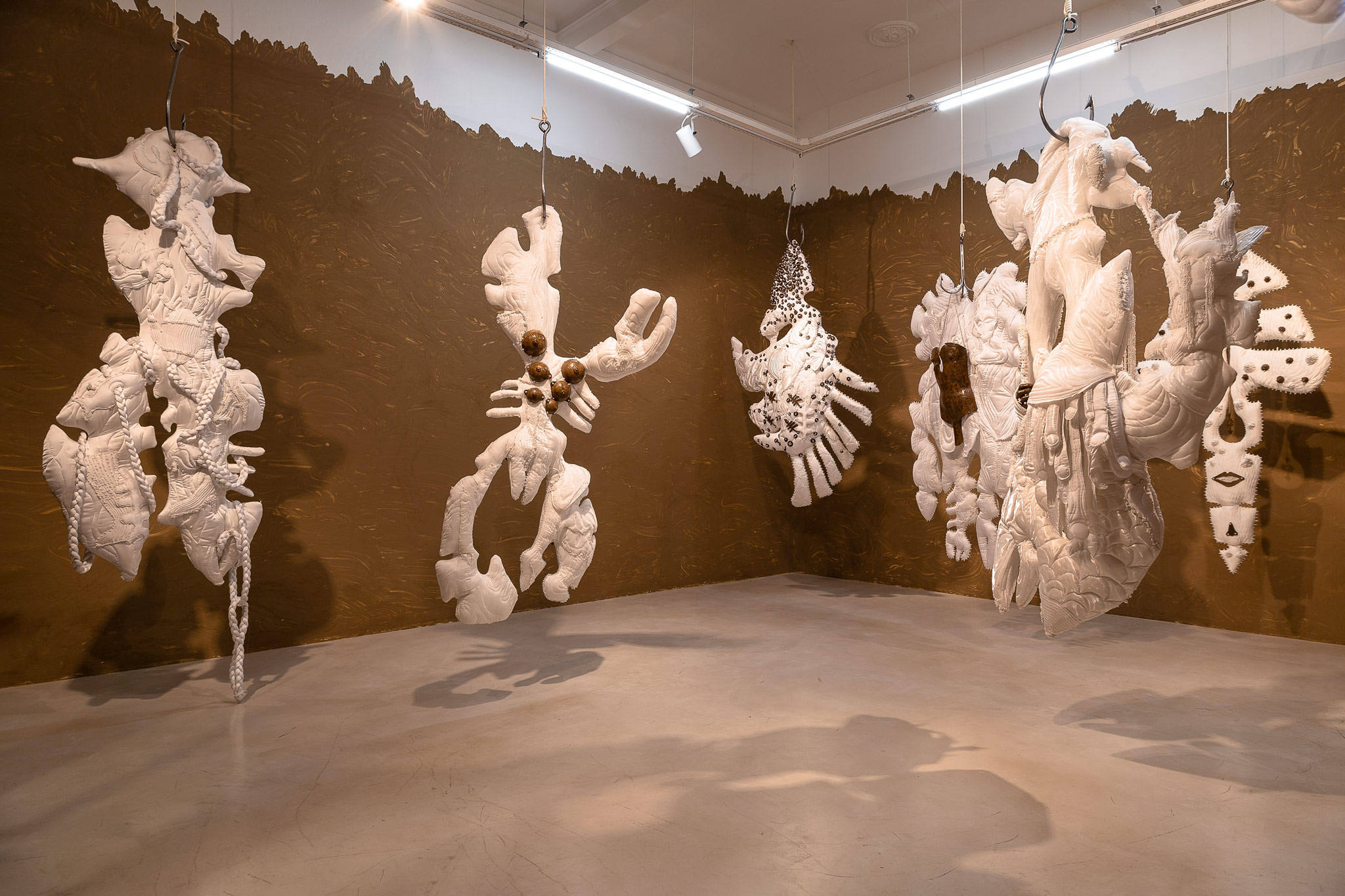Manuel Brandazza studied Fashion and Textile Design at the University of Buenos Aires and was part of the Rojas-UBA/Kuitca Visual Arts Program from 2003 to 2005. After years of participating in numerous fashion shows and design related performances, Manuel exhibited “Muchacho del Paraná” at the Jamaica Gallery in Rosario in June 2021. This piece received the Acquisition Prize of the National Salon of Rosario Castagnino-Macro and marked the beginning of a series of works that Manuel has been developing ever since. During the National Salon of the Rosa Galisteo Museum of Santa Fe, he presented his work “Río Paraná” and received the Stimulus Prize of the Ministry of Culture of the Province. In 2022 he held a solo exhibition entitled “PARAMPARA” at the PASTO Gallery. Textile design, murals, ceramics and sculpture are the main languages that intersect in Manuel’s work. His latest creations evoke the ichthyic and spiritual universe of the Paraná River through sinuous, circular, and expansive textures created with textiles and clay. The river serves as the foun- dation, the primordial surreal landscape, a universal paradise that builds communities and nurtures the noblest virtues for the continuity of life. Like a devoted disciple of the Paraná, Brandazza seems to protect its liturgy.
His work is inspired by the surrealist traditions of the Argentine Littoral, the realm of pop music and the visionary work of influential twentieth-century fashion designers. It also incorporates elements of Brazilian comparsas, always driven by the irresistible need for pleasure. At the same time, his work reflects a context marked by the ecocide that has aicted the Argentine Littoral in recent decades, resulting in the most significant drop in river levels in 77 years. Integrating the formal, the poetic, and the historical, Brandazza’s work encapsulates his extensive career, spanning from textile design and vibrant performances in the Buenos Aires nightlife of the 1990s, to his residency in Rio de Janeiro amidst the botanical abundance, and his involvement with the Escola do Samba Unidos do Viradouro in the mid-2000s. From the vibrant parties of Ave Porco and El Dorado where a unique form of performance art was born that is now considered essential to the local queer genealogy, to his present time in Rosario, his cherished hometown, Brandazza’s work has transformed into a flowing stream of corporeal images.


 Brandazza Manuel
Brandazza Manuel